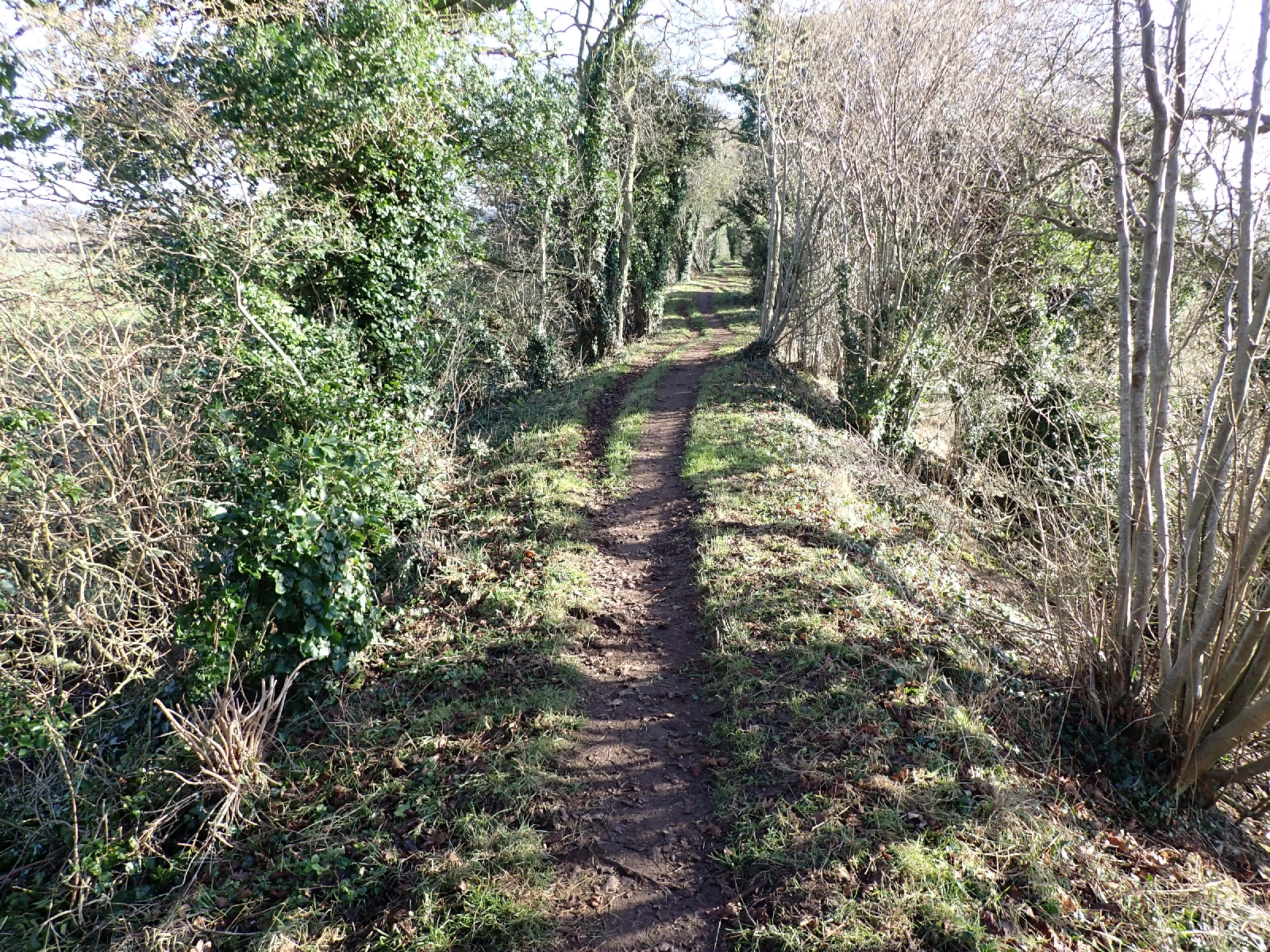But first on the 13th day of my trip I rested. My left knee had been complaining and I was stiff the previous morning and whenever I stopped for a while. By taking a rest day now, I hoped to reduce the possibility of having to abandon my hike later due to my knee problem. Although I could have caught the train to Oxford or tackled some other activity I decided on complete rest so I bought a newspaper and tried to puzzle out the "difficult" Sudoku square (and failed) among other sedentary tasks at the Streatley YHA. My only exercise was walking down to the Pierreponts café in Goring for a breakfast croissant & coffee, followed by Turkish eggs for lunch. (Goring is on the opposite side of the River Thames to Streatley).
Day 14 started with a walk beside the Thames. Near Goring the river was largely hidden behind hedges and fences, those wealthy people owning land beside the water evidently did not want me looking at their property. Later, as I walked through an area given over to reeds and fishermen I could look across the Thames to the expensive houses opposite. The path was between the river and the main railway line heading west out of London. Every few minutes a train went by at speed. I was surprised the local residents accepted the noise, as I suspect an acoustic barrier would significantly reduce it. Of course the railway line had been there for 150 years or so, and people accept things that have been present all their lives.
South Stoke and North Stoke were two villages on the Thames that the Ridgeway wandered through, each with a church whose walls were made of flint pebbles. I looked into the second (St Mary the Virgin) and found the faint remains of old paintings on the plastered walls.
The Ridgeway left the vicinity of the river at a busy road and turned decisively eastwards. Soon I found myself walking through trees on a raised bank with fields on either side. This was confusingly called Grim's Ditch, an ancient feature maybe once separating different Iron Age tribes. It led me in a fairly straight line, eventually entering woodland and becoming a ditch between two banks. At this point it was taking me uphill into the Chiltern Hills, having left the flat area around the Thames.
Walking through the Chilterns was very different from the earlier hills on the Ridgeway. Before Streatley the route was on high ground with an escarpment to the north dropping to lower land. In the Chilterns this division was not present and Ridgeway simply went up and down hills. I left Grim's Ditch at the village of Nuffield where I visited the Holy Trinity Church. Another flint walled church, inside I was pleased to find facilities to make a cup of coffee and a selection of cakes and biscuits in which I indulged, leaving a suitable donation on the contactless card reader, a rather modern feature of an ancient church. Among the more religious magazines available to read while enjoying my coffee was a ring binder on William Morris, later Lord Nuffield. A great entrepreneur who began with a modest bicycle repair shop but went on to create the Morris Car company which had great success in the years between the two World Wars. He gave much of his money away, particularly for education and health (e.g. Nuffield College in Oxford). I searched around the churchyard for where Lord Nuffield was buried, eventually finding his modest grave.
Continuing up and down over a neatly mowed golf course, woodland and fields I saw many red kites soaring overhead.....or else the same three were following me. (A little old lady walking her dog confirmed my bird identification). Swyncombe was the forth flint walled church of the day. Inside I met a man who wrote a book on its history (out soon). He told me the church was built in 1122 explaining how he deduced this date. White snowdrops and yellow celandine were about to burst into flower in the churchyard outside. Snowdrops tea parties were planned.
Several kilometres later I arrived at Watlington. A town, somewhat off the Ridgeway, of small shops and streets not designed for modern traffic. I admired the red brick town hall with an open area (an undercroft) below and a sundial to help citizens tell the time. It was located in the centre of a road junction which a large lorry was trying, with difficulty, to negotiate, On my way to the inn where I had booked a bed, I was distracted by a sign offering coffee and cake at the Spire & Spoke, the bacon and maple muffin was quite unusual.
Now in the bar of my accommodation after my evening meal, I am listening as a guy at the bar is telling his friend about a girl who invited him back to her room.... then forced him to go to confession at church the following morning.








No comments:
Post a Comment